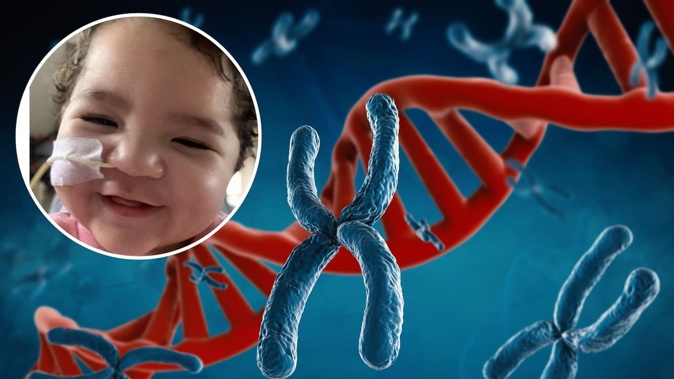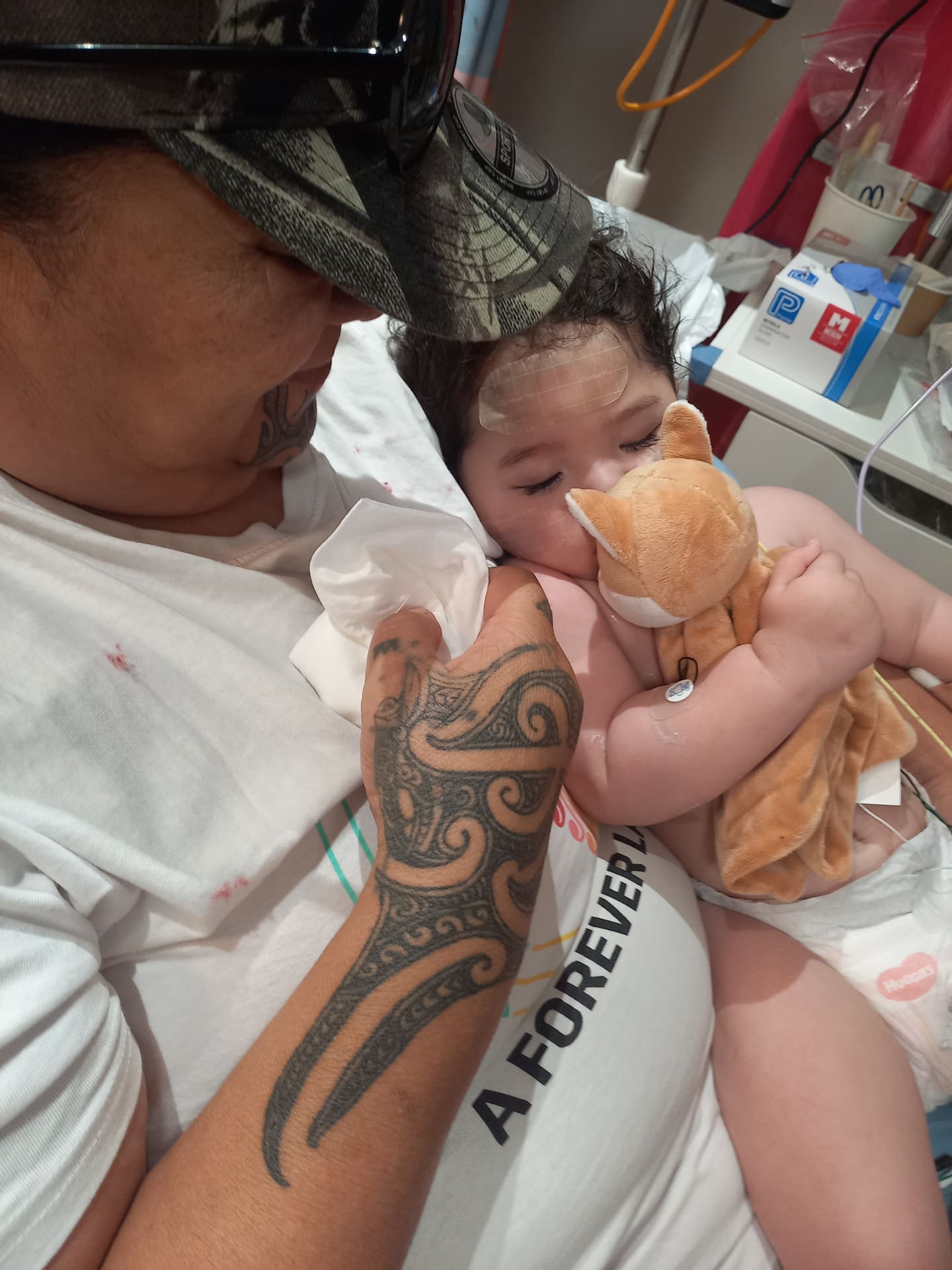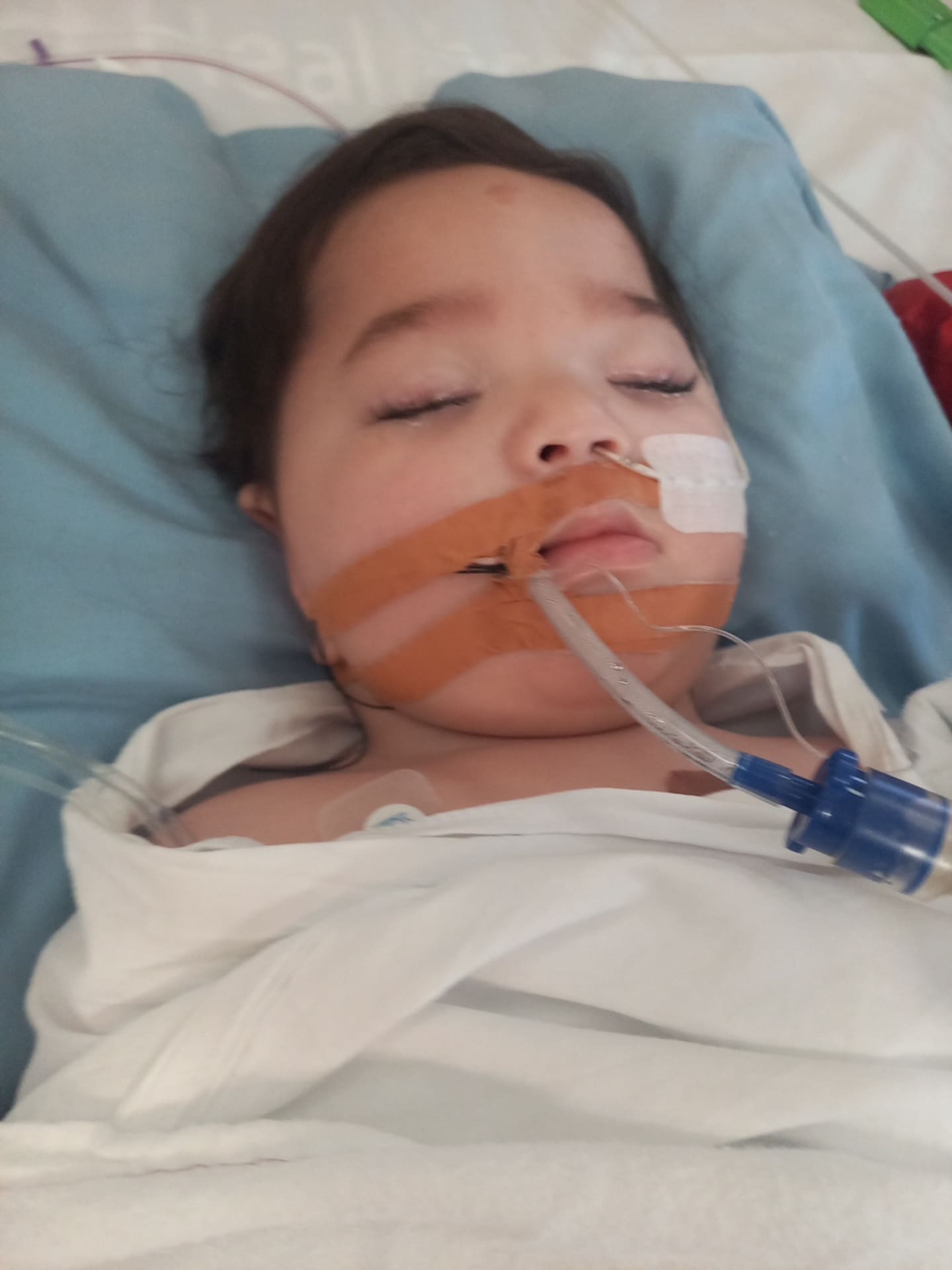
Katana Morunga looks like any other 15-month-old baby: cute, cuddly and angelic.
But Katana has Dnm2 congenital myopathy; an ultra-rare genetic disorder that makes her vulnerable to respiratory illnesses.
A simple bug could put her in Starship Hospital, where she has already been admitted 30 times, and ventilated twice in her short life.
Dnm2 congenital myopathy is so rare that studies have identified 42 patients as having it in North and South America and Europe. There have also been rare reported cases in India and South Africa.
Katana’s mother, Angelica Pohamara, believes her daughter is the only New Zealander with the incurable disorder, while Rare Disorders NZ says it has no records of another Kiwi sufferer.
Pohamara, 37, told the Herald “the slightest infection could be fatal”.
 Katana Morunga was diagnosed with the genetic disorder just months into her young life. Photo / Supplied
Katana Morunga was diagnosed with the genetic disorder just months into her young life. Photo / Supplied
“When Katana is thriving, she’s thriving... when she’s down, she can be beyond down,” she said.
“Katana hasn’t experienced any outside world other than the supermarket every now and then because I’m afraid of her catching bugs which leads to hospital admissions.”
Life expectancy for those with Dnm2 congenital varies. Those diagnosed while in their infancy can expect reduced life expectancy due to risks of catching infections that they can struggle to battle.
Many diagnosed in their adolescence or adulthood can have a normal life expectancy.
Pohamara had six children - now aged 22, 20, 18, 15, 7 and 6 - before she became pregnant with Katana.
She said the pregnancy was different from her previous ones - she didn’t feel her unborn baby moving as often as she had felt her others.

Mum Angelica Poharama with her daughter Katana Morunga. Photo / Supplied
Born three weeks premature in 2024, there were initially no alarm bells about Katana.
But at 5 months old, doctors noticed hypertonia – increased muscle tone, causing her muscles to be stiff and resistant to movement, caused by damage to the brain or spinal cord.
Blood tests and genetic testing led to the diagnosis of the rare hereditary mutated gene condition.
Symptoms include muscle weakness, facial and eye muscle weakness (ptosis) and potential respiratory problems.

An ultra-rare genetic disorder has seen baby Katana Morunga hospitalised 30 times. Photo / Supplied
Pohamara - who has whakapapa to Hokianga and Ngāi Tahu - said Katana’s diagnosis was devastating.
“I was blessed to have another girl after five boys and my older girl and for her to be our special baby.
“She has brought a whole new perspective to our lives for the greater good.”
Katana has a weak immune system and minor infections can mean hospital trips.

Katana Morunga is hugely loved by family as she battles a rare and uncurable disorder. Photo / Supplied
Katana - known as Hiwa by her whānau - has been in the hands of medical experts her entire short life, “who have been amazing”, Pohamara said.
Hospital admissions were normally at least five-day stays as Katana didn’t present with symptoms like other children did, her mother said.
“With her myopathy it’s a lot harder for her to show that she’s in distress until it’s too late. And because I don’t have a massive understanding of her condition, it makes things a lot harder for us.
"I live in fear of germs as that’s what could potentially end Katana’s life."
- Mum Angelica Pohamara
“She’s everyone’s sparkle.”
Rare Diseases NZ said before Katana’s case, it had not been previously contacted by any Dnm2 congenital myopathy sufferers in New Zealand.
“It is feasible Katana is the only one in New Zealand based on international prevalence studies,” a spokesperson said.
 Baby Katana Morunga held by her mum Angelica and surrounded by her loving whānau. Photo / Supplied
Baby Katana Morunga held by her mum Angelica and surrounded by her loving whānau. Photo / Supplied
“New Zealand does not systematically collect data on rare disorders, and Rare Disorders NZ has long been calling for rare disorders to be coded in the health system, with a particular focus on national health datasets being able to routinely collect rare disorder information. This would help us understand the prevalence of the diagnosed cases of various rare disorders in the population.”
Pohamara said despite Katana’s monumental life hurdles, the whānau tries to treat her as normally as they can.
“Katana is behind in her milestones, but she will get there in her own time when she’s ready.
“I live in fear of germs as that’s what could potentially end Katana’s life.”
During stays at Starship Hospital, Pohamara’s older children and their father - who she is no longer with - help care for the younger children.
Joseph Los’e is an award winning journalist and joined NZME in 2022 as Kaupapa Māori Editor. Los’e was a chief reporter, news director at the Sunday News newspaper covering crime, justice and sport. He was also editor of the NZ Truth and prior to joining NZME worked for Urban Māori organisation Whānau Waipareira.
Take your Radio, Podcasts and Music with you









